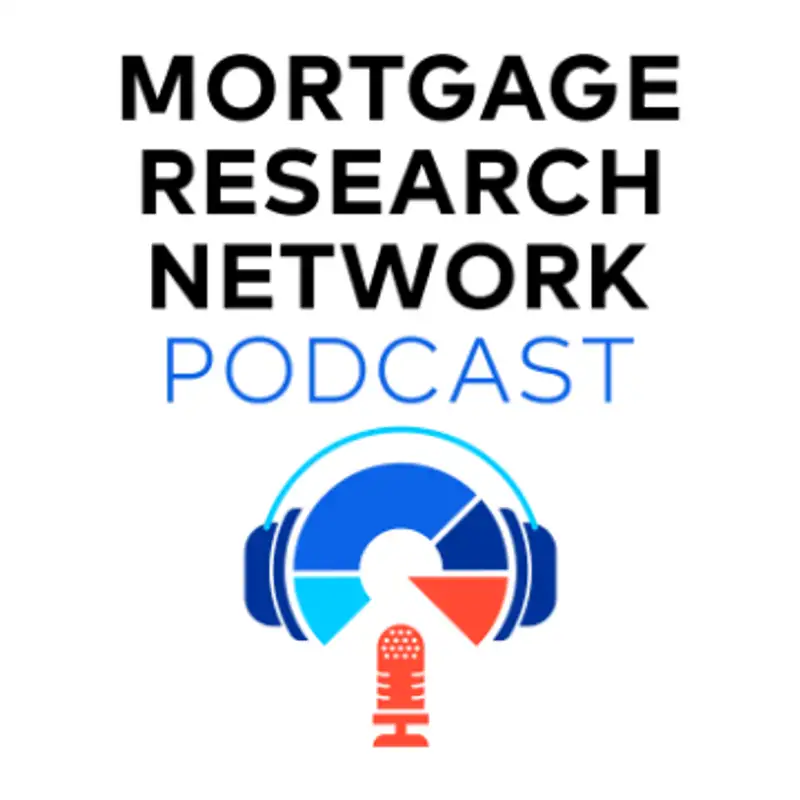Builder Buydowns: The Hidden Discount in New Homes
Welcome to the Mortgage Research Network Podcast. Just a note that this podcast is AI-generated, but the article on which it's based was produced by people. Content is reviewed for accuracy. And your hosts, Tim and Craig, are real people. Without further ado, let's get into today's topic.
I'm your host, Tim Lucas, editor of MortgageResearch.com and a former mortgage professional, and with me is Craig Berry, a mortgage originator with 25 years experience.
Hi everyone.
Today we're talking about how home builders are offering mortgage rates 2 to 3% below market. But the real story behind these seemingly magical discounts reveals a fascinating shift in how the housing market actually works.
That's quite a difference in rates. How are builders managing to pull this off without losing their shirts?
Well, it's actually a pretty clever financial strategy. These builders are using their profits to "buy down" interest rates, and we're talking serious money here. John Burns' research shows that to permanently reduce an FHA loan rate by just 1.5%, builders are paying up to $34,000 for an entry-level home.
So they're essentially eating that cost to make the sale happen. But surely there must be more to it than just giving away money?
Oh there definitely is. and here's where it gets really interesting. One builder disclosed in a recent earnings call that they're spending about 6.3% of each home's price on incentives. that's roughly $35,000 on their average $549,000 home. But instead of using that money for fancy countertops like they used to, they're redirecting it all toward these rate buydowns.
So they're not actually offering anything more than they used to. They're just repackaging existing incentives?
Exactly right. And get this. about 80-85% of buyers are now choosing these rate buydowns over traditional upgrades. But here's the really fascinating part. builders are using this strategy to protect their entire community's property values.
What do you mean by protecting property values?
Well, let me break it down with a specific example. Say you have a neighborhood where homes sell for $500,000. If a builder drops the price to $470,000 on one home, every future appraisal in that community has to consider that lower price point. But if they keep the price at $500,000 and offer $30,000 in rate buydowns instead, they maintain stable prices.
That's pretty brilliant from a marketing perspective. They're able to adjust the price, so to speak, without actually cutting prices.
Right! And here's something even more surprising. when you look at the current market data, new homes are selling for about the same price as used homes. The median new home price is around $426,000, while existing homes are going for just $3,000 less at $423,000 according to data from the census bureau, hudd, and the National association of realtors.
That seems counterintuitive. you'd expect new construction to come at a premium.
You would, wouldn't you? But this is where the math gets really interesting. Let's say you're looking at a $500,000 home with a 6% rate which was bought down by the builder. Then, take an existing home costing 470 K at 7.5%. Even though the used home is $30,000 cheaper, your monthly payment would actually be $250 higher. And that's the magic of interest rates and buydowns.
That really shows how much these rates impact affordability. But what happens if rates drop significantly in the future?
That's the gamble buyers need to consider. If you take that sweet 6% rate today and rates drop to 5% in a few years, you've essentially paid for something temporary. But here's what makes this situation even more complex. Individual home sellers can't compete with these builder incentives. They might offer a few thousand in closing costs, but they can't match these massive rate buydowns.
So it's really changing the competitive landscape between new and existing homes?
Absolutely, and it's even changing the mortgage market. We recently released a study showing the top 10 retail mortgage lenders in the U.S. by number of loans. You'll never guess two of the top 10. At number 2 was DHI mortgage, the affiliated lender for home builder DR Horton. At number 7 is lennar Mortgage, another builder-affiliated lender. Their loan count is way up since homebuyers typically must use the builder's lender to get these deals.
That's quite a shift in how the housing market operates. What should buyers be thinking about when considering these deals?
Well, I think it comes down to three key factors: your long-term plans in the home, your view on future interest rates, and your current financial situation. If you can only qualify at the lower rate, that might make the decision FOR you. But if you have more flexibility, you might want to consider splitting those incentives between rate buydowns and permanent improvements. Because if you refinance or sell in a few years, that lower rate doesn't help you. But the appliance and countertop upgrades, and that top-of-the-line bathroom would.
Sounds like there's no one-size-fits-all answer here.
No, and that's what makes this whole situation so fascinating. It's showing us how markets adapt to challenging conditions. When traditional sales methods don't work, innovation happens. The key for buyers is understanding exactly what they're getting and what they might be giving up in these deals.
That's about all the time we have for this topic, but we go into even more detail on the site. To learn more, go to Mortgage research.com and type builder buydown in the search bar at the top of the homepage. We'll see you next time on the Mortgage Research Network Podcast.
